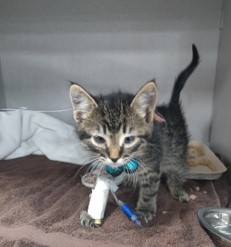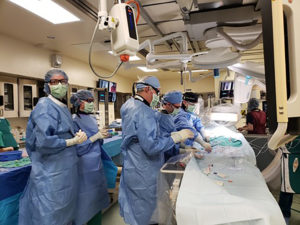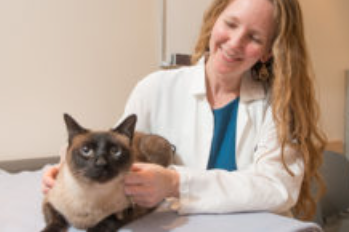Natural Animal Models
Many diseases of dogs, cats, horses and other companion animals are similar to diseases in people. For example, dogs, cats and horses often get similar types of cancers as people do since animals share much of our biology, environment, and exposures. Accordingly, studying these “natural animal models of disease” can not only find better ways to diagnose, treat, and prevent diseases of animals, but can provide great benefits for treatment of the same condition in humans.

Gut Microbial Dysbiosis
Dysbiosis, also called dysbacteriosis, occurs when there is an imbalance (either in number or type) of microbial communities that have colonized the host. Dysbiosis can negatively impact a host’s wellbeing—

Traumatic Brain Injury
The goals in stabilizing, diagnosing, and managing TBI patients – both human and canine – are very similar. When approaching a TBI case, the patient must be initially stabilized and assessed for hypovolemia, hypoventilation–

A New Approach To Conquering Cancer
Comparative oncology is the study of naturally occurring cancers in more than one species. Colorado State University’s Flint Animal Cancer Center has been a leader in the field for more than forty years.

Inflammatory Bowel Disease (IBD)
Inflammatory Bowel Disease Species affected: felines, canines, humans, equines Human Terminology: Inflammatory Bowel Disease, Crohn’s Disease, Ulcerative colitis Description: Inflammatory bowel disease (IBD) involves chronic inflammation of the gastrointestinal (GI)

Mitral Valve Disease
myxomatous mitral valve disease, chronic mitral valve disease, degenerative mitral valve disease, mitral insufficiency) Species affected: Humans, Canines Brief Disease Description: Mitral valve disease (MVD) can be congenital (a defect)

Diabetes Natural Animal Model
Diabetes mellitus is a metabolic disorder that is increasing in prevalence in people, dogs, and cats. In each species, the disorder results from a defect in insulin secretion

Epilepsy Natural Animal Model
Epilepsy is a chronic neurological condition characterized by unpredictable seizures, and it affects both humans and animals. Management of epilepsy is often challenging, especially with Dravet syndrome and Lennox-Gastaut

Chronic Kidney Disease
Chronic kidney disease (CKD) is reported in 1-3% of cats with an estimated one-third of cats developing CKD in their lifetime. In the US, 15% of adults, 37 million people-

Ocular Squamous Cell Carcinoma Natural Animal Model
Ocular squamous cell carcinoma (SCC) is a form of neoplasia (e.g. cancer) affecting the eye of both animals and humans. Ocular SCC is relatively rare in humans, affecting 1


